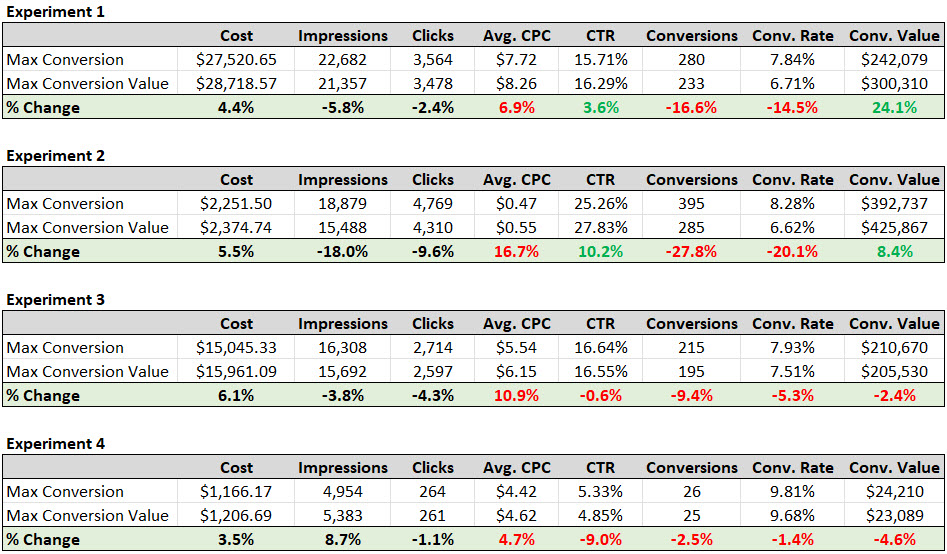
When it comes to generating Google conversions, Google Ads is one of the best marketing programs to help you increase traffic and generate Google conversions to your website. When it comes to Google Ads, one important setting is the smart bidding strategy you select. We understand that it can be overwhelming picking the right bidding strategy for each campaign you have running in your Google Ads account. It gets even more confusing if your goal is to generate Google conversions because there are multiple “conversion” related Google Ads bidding strategies.
In this post, we will give an overview of what you need to do to start leveraging a Google conversion based bidding strategy. We will then give an overview of each conversion related bidding strategy and their intended purpose. To top it off, we will then compare campaign experiments we have run between max conversions vs. max conversion value to see if they did accomplish their intended purpose.
It’s important to note that to properly leverage a conversion-based bidding strategy, your Google Ads account must have conversion tracking set up. There are multiple ways to accomplish this, and if you need help setting up conversion tracking we would love to help you. Our preferred way to set up conversion tracking in a Google Ads account is to set up all tagging in Google Tag Manager to feed the data to Google Analytics 4. Once it’s populating in Google Analytics 4, we flag those events as “conversions”, which then allows us to pull those actions into the Google Ads account from Google Analytics 4.
Why do we prefer this route? Setting up all conversion tracking in Google Analytics 4 allows you to see conversion level information for every channel, not just Google Ads paid search. This is important to measure the activity across all marketing activity. In addition, Google Analytics 4 is the next generation of Google Analytics, so it’s the platform you want to be on, especially since there are big changes happening in the privacy realm and to the way people are tracked online.
Conversion Tracking Scenarios:
To properly leverage a conversion-based bidding strategy, you should first have some account activity and ideally conversion activity taking place. Google works by understanding all factors that correlate to a person who is likely to convert, so the more conversion history you have, the smarter the system will be. If you activate a conversion-based bidding strategy in a new account, or an account that is not generating conversions, it might not work as well as it could.
Generally, with any new account or an account that had newly implemented conversion tracking, we will start with a bidding strategy meant to generate activity. For example, we typically start with a “max click” bidding strategy, but there are other options as well. We like max click because it generates volume. Once the account has time to start generating conversion activity, we will then run a campaign experiment to potentially step into a conversion-based bidding strategy. Our process typically looks something like this:
In this scenario, Google will try to generate more of the conversions that are the top of the list to generate the most value as possible, instead of just the most conversions possible.
Now for the fun! Below we compare max conversion vs. max conversion value experiments we have run to see if they did achieve the intended results. These were run as campaign experiments, so they were set up to 50/50 split tested the traffic in real time so we could compare which strategy drove the best results. It’s also important to note, we let each once run for enough time to give us a relevant sample size of data.

In 50% of these experiments, we would say it was a positive outcome because conversion value was stronger. That said, by picking a max conversion value vs. a max conversion bidding strategy, it seems like you can expect a potential increase in cost per click, decrease in total conversions, decrease in conversion rate, and sometimes get that boost to conversion value.
In two of these cases, we went with the max conversion value bidding strategy, and the other two we went with the max conversions.
We would highly recommend you run your own experiments to learn which bidding strategy is best. As we learned you can’t just expect the desired results based on the bidding strategy. Test, learn, and move forward with the strategy that fits your goals, for every campaign. Blindly changing bidding strategy is not a good idea, as shown by some of the unintended results in our experiments.
Happy testing!